Drywall Repair in Metro Detroit: When to DIY and When to Call for Help
Learn drywall repair basics, when to tackle projects yourself, and when to hire Five Star Professional Contractors for seamless results.
Our Drywall Repair in Metro Detroit guide shows homeowners clear steps to fix nail pops, cracks, and holes. Drywall is one of the most used materials in homes — and one of the most likely to get damaged over time. Whether it’s a nail pop from seasonal settling, a doorknob hole from kids running inside, or water stains from a leaky roof, drywall issues can ruin the look of an otherwise beautiful room. This drywall repair guide will help you decide when to DIY and when to call a professional for help.
Common Drywall Repair Problems
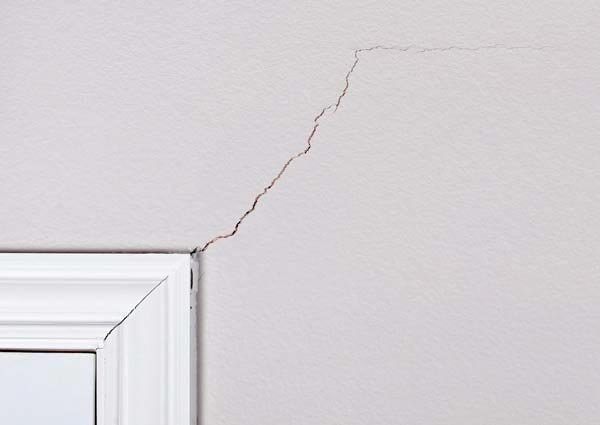
Nail Pops: These small bumps occur when the drywall panel moves slightly and the nail or screw backing it out becomes visible. Common in homes less than five years old, they’re mostly cosmetic but can multiply if not fixed correctly.
Hairline Cracks: Seasonal changes and foundation settling can create thin cracks at drywall seams or near corners. These are common in Michigan because of freeze-thaw cycles that cause structural movement.
Dents and Dings: Door handles, furniture corners, and even pets can leave small indentations that are quick to patch but obvious when light hits them at the wrong angle.
Water Stains: Leaks from roofs, plumbing, or windows can stain drywall and cause soft spots. If left untreated, this can lead to mold growth — a much more expensive problem.
Large Holes or Missing Sections: Whether from accidental damage or a plumbing repair, big holes require a more methodical approach with patch panels and multiple coats of compound.
Essential Tools for Drywall Repair
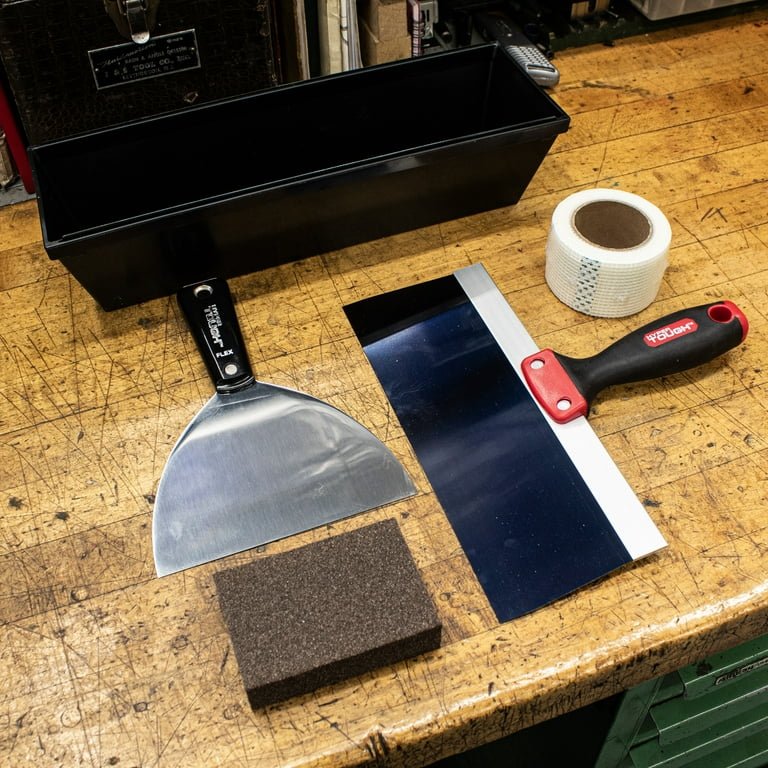
A solid drywall repair kit should include:
- Utility knife and drywall saw for clean cuts
- Taping knives (4″, 6″, 10″ sizes) for feathering compound
- Joint compound (pre-mixed for convenience or powder for pros)
- Mesh tape for cracks, paper tape for inside corners
- Sanding sponge or pole sander with fine-grit paper
- Dust mask, drop cloths, and a good shop vac
Step-by-Step Drywall Repair in Metro Detroit: Fixing Nail Pops
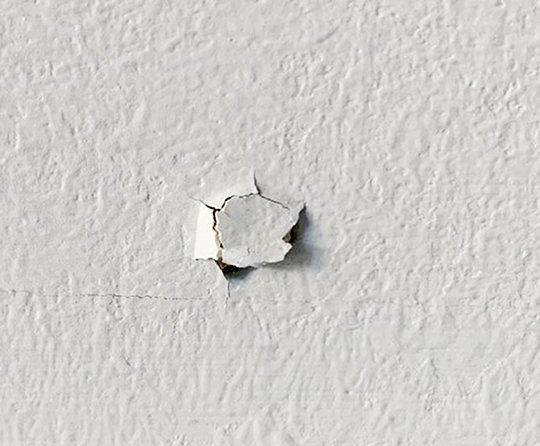
- Drive a drywall screw 1–2 inches above or below the popped nail to re-secure the panel to the stud.
- Tap the popped nail back flush or remove it entirely.
- Apply a thin layer of joint compound over the area and feather outward.
- Let dry, apply a second coat if needed, sand smooth, prime, and repaint.
Repairing Small and Medium Holes
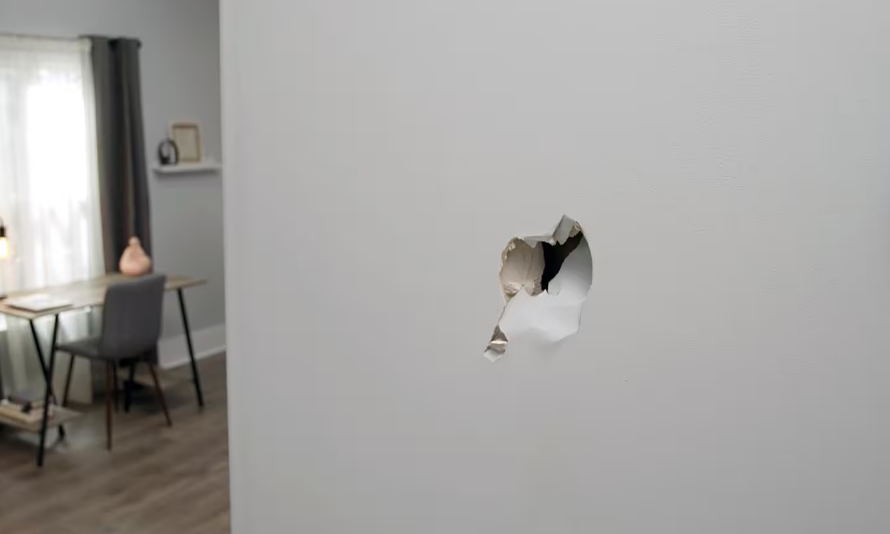
For small holes (under 2″), lightweight spackle works fine — fill, sand, and paint. For larger holes:
- Cut a neat square around the damaged area.
- Attach a backing board (like a piece of furring strip) inside the hole.
- Screw in a new piece of drywall cut to fit.
- Tape seams with mesh tape and apply multiple thin coats of compound.
- Sand carefully between coats until perfectly flush.
When to Call a Professional for Drywall Repair
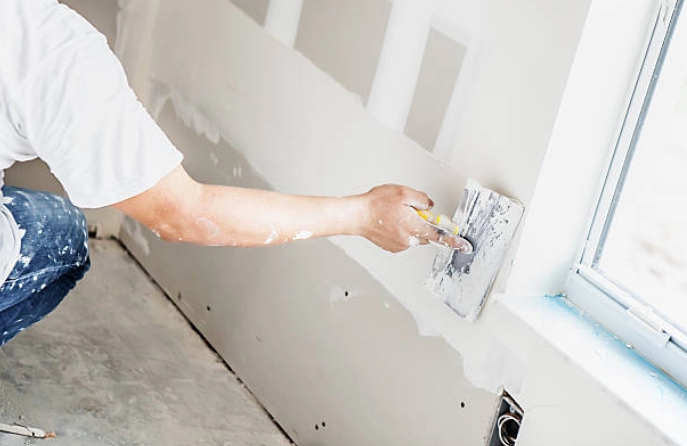
You should hire a professional if:
- There is water damage or mold present — this may require replacing insulation or disinfecting cavities.
- The damaged area is larger than a few square feet or on the ceiling.
- You want a flawless, paint-ready surface with no visible seams.
- You need matching texture (orange peel, knockdown, skip trowel).
Drywall Repair Costs: DIY vs Professional
DIY Costs: Expect $25–$75 for basic tools and supplies for a small project, plus time to learn and practice. Larger repairs may still be cost-effective if you already own tools.
Professional Costs: In Metro Detroit, a small patch may run $150–$250, while multiple repairs or ceiling work could cost $400–$1,000. The price usually includes labor, materials, texture matching, and cleanup — saving you several evenings of work.
FAQs Drywall Repair in Metro Detroit
How long do repairs take? Small patches can be done in a day, but larger areas require 2–3 visits to allow compound to dry between coats.
When can I paint? After the final coat is sanded and fully dry, apply primer. Once primer is dry (usually within an hour or two), you can paint.
Will the repair be invisible? With careful sanding and feathering, yes. Pros often use wide knives to blend repairs so they disappear under paint sheen.
Is drywall dust dangerous? While not toxic, it’s irritating to lungs and eyes. Always wear a dust mask and clean thoroughly.
Bottom Line
Drywall damage is part of normal homeownership — but leaving it alone makes rooms look neglected. For small issues like nail pops and minor dents, DIY drywall repair is inexpensive and very doable. For larger holes, water damage, or texture-matching, hiring a pro gives you a smooth, seamless finish and saves time. Whether you DIY or call us, the key is proper prep, multiple thin coats, and patience between steps. The reward is walls that look brand-new and ready for fresh paint.
More Resources: Read HGTV’s Drywall Repair Tips or see Lowe’s Drywall Buying Guide for tools and materials recommended by experts.